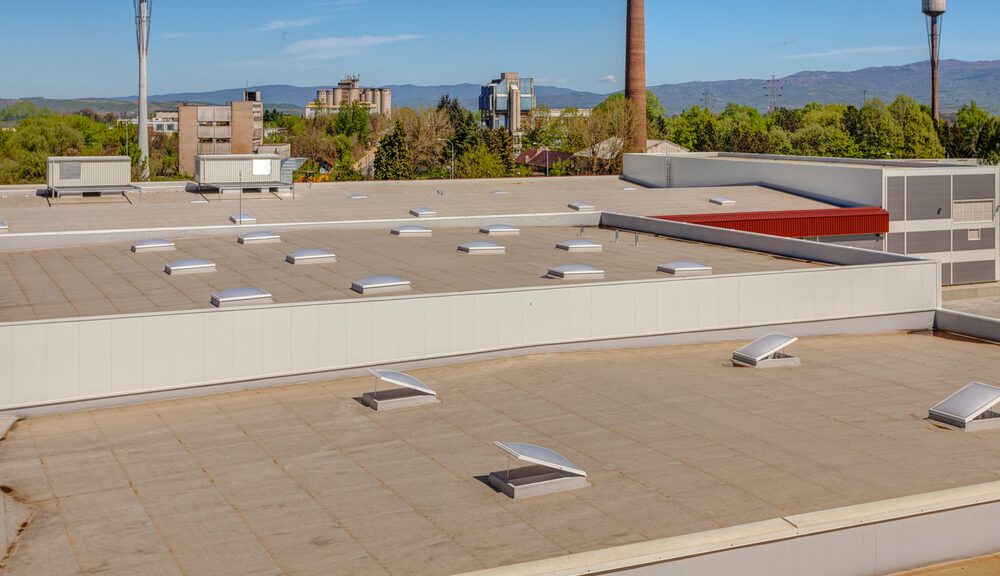
Image Source: Google
Commercial flat roofing is a popular choice for many businesses due to its cost-effectiveness and durability. When it comes to selecting the right material for your commercial flat roof, there are several options available. Each type of material has its own advantages and disadvantages, so it's important to understand the differences between them before making a decision. In this article, we will explore the various types of materials used in commercial flat roofing to help you make an informed choice for your building.
1. Built-Up Roofing (BUR)
Overview:
- BUR is one of the oldest and most traditional types of flat roofing materials.
- It consists of multiple layers of bitumen and reinforcing fabrics such as fiberglass or polyester.
- This type of roofing is known for its durability and waterproofing properties.
Pros:
- Excellent waterproofing capabilities.
- Long lifespan of up to 30 years with proper maintenance.
- Resistant to UV rays and weather damage.
Cons:
- Can be heavy and require additional structural support.
- Installation process can be labor-intensive and time-consuming.
- May be prone to leaks if not properly installed.
2. Modified Bitumen Roofing
Overview:
- Modified bitumen is a single-ply membrane that is made from asphalt and rubber modifiers.
- This material is designed to offer increased flexibility and resistance to temperature changes.
- Modified bitumen roofing is often installed in multiple layers for added durability.
Pros:
- Easy to repair and maintain.
- Good resistance to punctures and tears.
- Excellent flexibility, making it suitable for buildings with temperature fluctuations.
Cons:
- May require frequent inspections to check for damage or deterioration.
- Can be more expensive than some other flat roofing materials.
- Installation should be done by experienced professionals to ensure proper sealing and adhesion.
3. Thermoplastic Polyolefin (TPO) Roofing
Overview:
- TPO roofing is a popular choice for commercial buildings due to its energy efficiency and reflective properties.
- This single-ply membrane is made from a blend of polypropylene and ethylene-propylene rubber.
- TPO roofing is known for its resistance to UV rays, chemicals, and ozone.
Pros:
- Highly energy-efficient, reducing cooling costs for the building.
- Lightweight material that is easy to install.
- Durable and resistant to tears, punctures, and impact damage.
Cons:
- May be prone to shrinking over time, leading to potential seam issues.
- Quality of TPO membranes can vary between manufacturers.
- Not recommended for buildings with high heat exposure.
4. EPDM Roofing
Overview:
- EPDM (ethylene propylene diene terpolymer) roofing is a synthetic rubber membrane that is commonly used in commercial flat roofing.
- This material is available in large rolls, making installation quick and easy.
- EPDM roofing is known for its durability and resistance to hail damage and UV rays.
Pros:
- Long lifespan of up to 50 years with proper maintenance.
- Good resistance to extreme temperatures and weather conditions.
- Cost-effective option for commercial buildings.
Cons:
- Prone to punctures from sharp objects.
- May require periodic resealing of seams to prevent leaks.
- Not as environmentally friendly as some other flat roofing materials.
Conclusion
When it comes to choosing the right material for your commercial flat roof, it's important to consider factors such as durability, cost, maintenance requirements, and environmental impact. Each type of material has its own strengths and weaknesses, so be sure to consult with a professional roofing contractor to determine the best option for your building. By understanding the different types of materials used in commercial flat roofing, you can make an informed decision that will protect your investment and ensure the longevity of your roof.